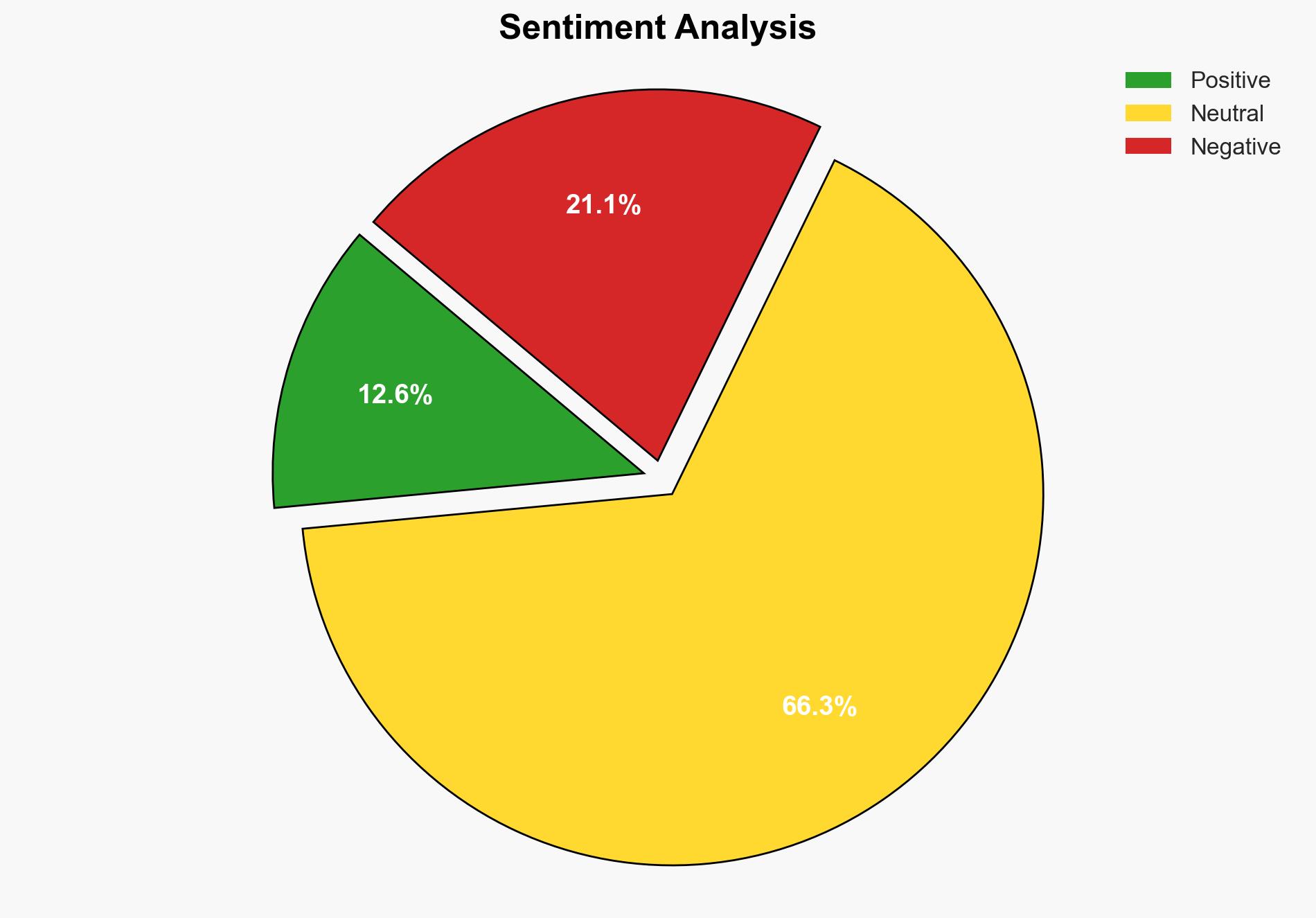The Israel-Hamas Ceasefire Was Never Going to Last – Time
Published on: 2025-03-23
Intelligence Report: The Israel-Hamas Ceasefire Was Never Going to Last – Time
1. BLUF (Bottom Line Up Front)
The ceasefire agreement between Israel and Hamas, initiated in mid-January, was predicted to be fragile and ultimately unsustainable. Key factors contributing to its collapse include Israel’s strategic military actions, internal political pressures, and the lack of a comprehensive agreement addressing core issues. The ceasefire’s failure is likely to exacerbate regional instability and could lead to renewed conflict, impacting both national security and economic interests.
2. Detailed Analysis
The following structured analytic techniques have been applied for this analysis:
General Analysis
The ceasefire was initially agreed upon with the understanding that it would include phases involving the release of hostages and prisoners, and the withdrawal of Israeli forces from heavily populated areas. However, Israel’s reluctance to negotiate the second phase, coupled with military operations in Gaza, undermined the ceasefire’s stability. The political landscape in Israel, marked by coalition tensions and leadership challenges, further complicated the situation. The Palestinian side, particularly Hamas, faced increased hostility and pressure, yet maintained leverage through its control over prisoner releases.
3. Implications and Strategic Risks
The collapse of the ceasefire poses significant risks to regional stability, potentially leading to a resurgence of violence. The humanitarian situation in Gaza is dire, with high civilian casualties exacerbating tensions. The ongoing conflict threatens to destabilize neighboring regions and could impact international economic interests, particularly in energy markets. Additionally, the internal political dynamics in Israel may lead to shifts in policy and governance, further complicating peace efforts.
4. Recommendations and Outlook
Recommendations:
- Encourage diplomatic engagement to facilitate a sustainable ceasefire agreement that addresses core issues, including territorial disputes and humanitarian concerns.
- Support initiatives aimed at strengthening political stability within Israel to reduce internal pressures that hinder peace negotiations.
- Enhance humanitarian aid and development programs in Gaza to alleviate civilian suffering and reduce hostility towards Israel.
Outlook:
In the best-case scenario, renewed diplomatic efforts could lead to a comprehensive peace agreement, stabilizing the region. In the worst-case scenario, continued conflict may result in further casualties and regional destabilization. The most likely outcome involves intermittent skirmishes and a prolonged stalemate, with periodic negotiations failing to achieve lasting peace.
5. Key Individuals and Entities
The report mentions significant individuals and organizations, including Benjamin Netanyahu, Itamar Ben Gvir, and Betzalel Smotrich. Their actions and decisions play crucial roles in shaping the political landscape and influencing the ceasefire’s viability.





